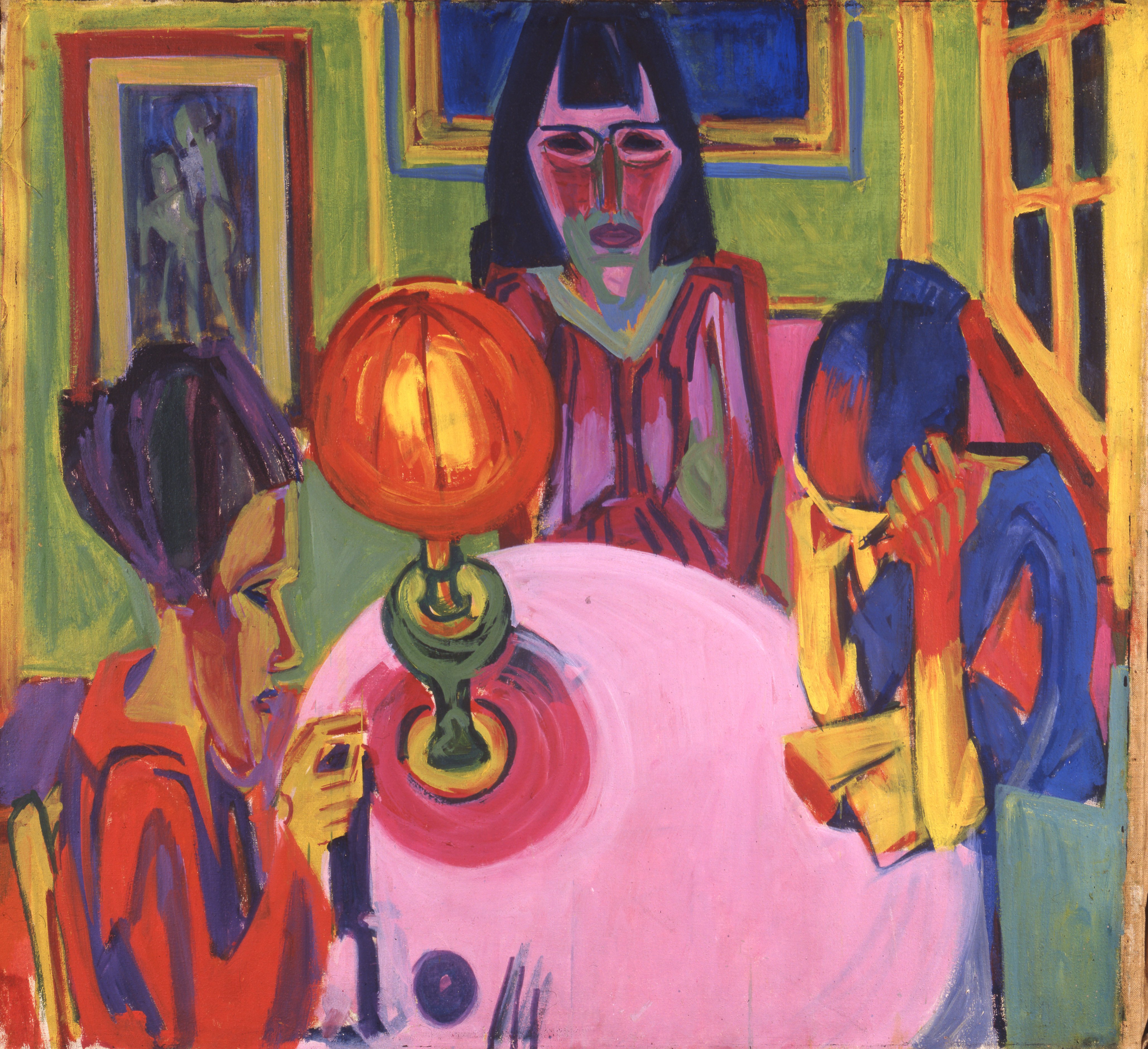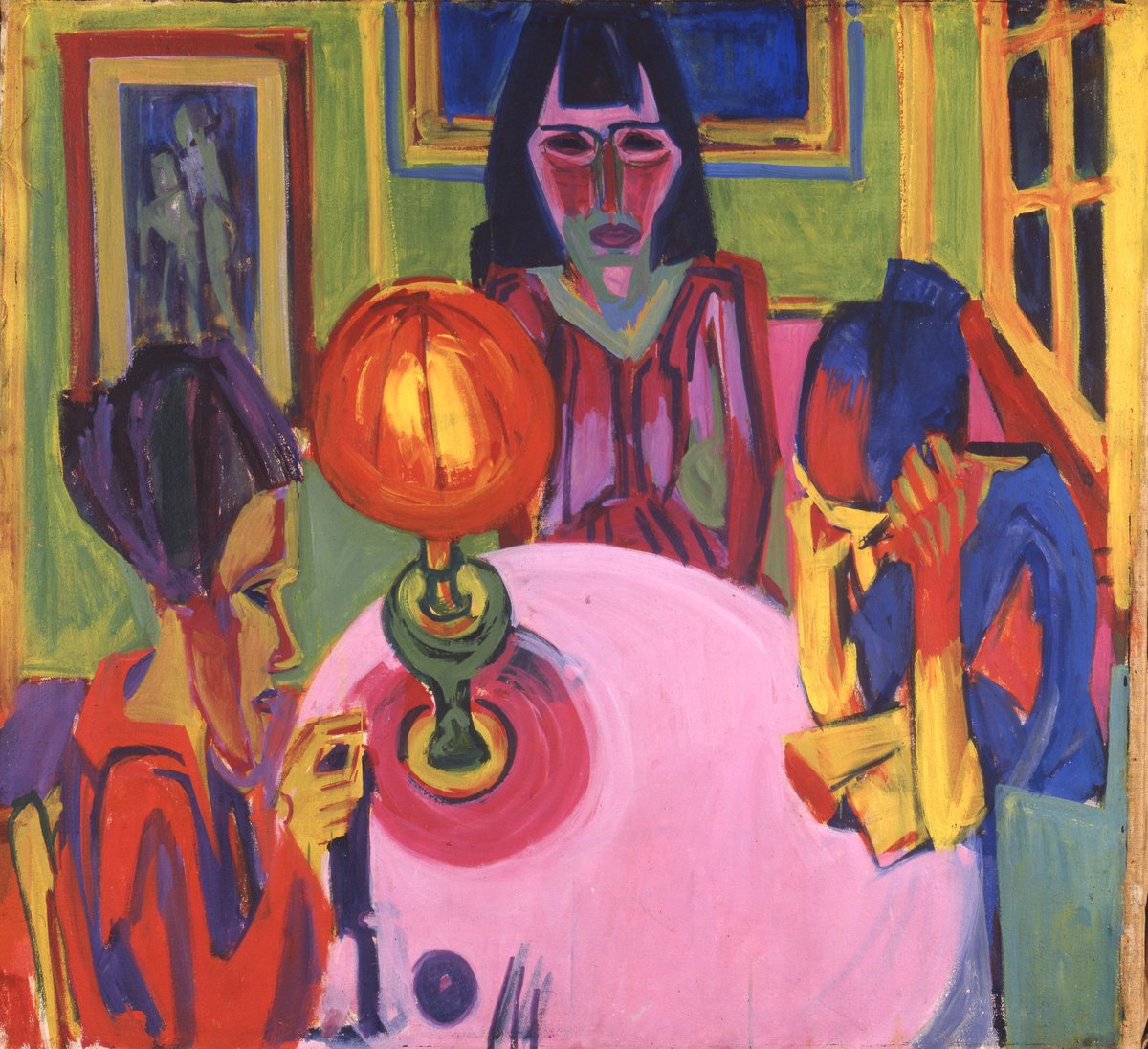Albert Müller
Interieur, 1924

Albert Müller
Interieur, 1924
Kunst Museum Winterthur, Ankauf, 1965
Foto: SIK-ISEA, Zürich (Lutz Hartmann)
Albert Müller from Basel is considered one of the main representatives of Swiss Expressionism. He received his first artistic training in a glass-painting studio and at the trade school in his native city. At the age of 24, the local socio-cultural and political restrictions prompted Müller to move to the Canton of Ticino. Despite this, he remained involved in cultural events in Basel. Thus, he got to know the work of Ernst Ludwig Kirchner at Kunsthalle Basel, which made a deep impression on him and other young Basel artists and radically changed their work.
As a result, Müller founded, together with Paul Camenisch and Hermann Scherer, the «Rot-Blau» or Red-Blue group on New Year's Eve 1924, which considered itself an innovative artists' association and emerged as a rebellion against the older generation of Basel painters. It led to a late flowering of Expressionism in Switzerland. The resulting painting was wild and quite shocking with its uninhibited colours and archaic formal language. The aim was no longer to depict the real world, but to express the inner, subjective one.
In our interior scene, this is particularly evident in the strong, bright colours that Müller used. Three women sit close up at a table in a confined space. The windowed wall with the corner bench placed in front of it on the right-hand edge of the picture quickly reveals depth through its strong foreshortening, while the table in the foreground, which looks as if it has been opened up, and the back wall with the two pictures emphasize two-dimensionality. Last but not least, the sharp con¬tours, hard corners and edges of the picture details, especially of the three figures, are quite extreme and dramatic. While the two women in profile are engrossed in their reading and needlework, the woman sitting behind the table seems to stare at us impassively. With her arms folded and her shoulders hunched, she adopts an unnatural, almost cramped posture, giving the impression that something is seriously troubling her.

Albert Müller
Interieur, 1924
Kunst Museum Winterthur, Ankauf, 1965
Foto: SIK-ISEA, Zürich (Lutz Hartmann)
The portrait sitter is Anna Müller-Hübscher, the painter's wife. She was suffering from depression due to a difficult birth a year before the painting was created and the young family's financial difficulties. Müller captured his partner's state of mind and inner tension in the painting and makes it tangible to viewers. Nevertheless, the situation of the three women seems amicably familiar, which Müller expresses through the soft pink colour of the table and the warm light of the lamp. The latter is an atmospheric metaphor for the intimacy and togetherness of people around a table, where its glow symbolizes warmth and security.


